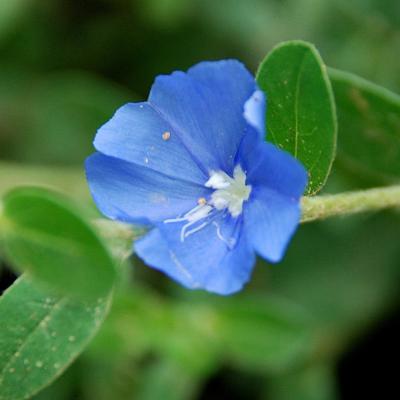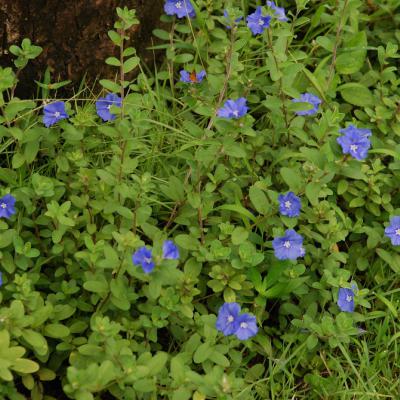Convolvulaceae-Convolvulus-sabatius
Classification
- Botanical Family : Convolvulaceae
- Genus : Convolvulus
- Epithet : sabatius
- German Family Name: Windengewächse
- English Name: Moroccan Glory Vine,
- Thai Name: ฟ้าประดิษฐ์
- Thai Phonetic: fa pra dit
- Author: Viviani
Water Requirements
Plant Type
Light Requirements
Cultivation
Convolvulus sabatius is a perennial, herbaceous plant and grows 10 to 30 centimeters heigh. The stems are upright or lying and are not twinning. The small green leaves are oval.
The flowers are light blue to purple and bloom all year round.
The plant develops very rapidly and quickly becomes a decorative groundcover. However, unlike its relatives Ipomoea in the family Convolvulaceae, Convolvulus sabatius growing not twining and is not invasive.
Grows in any soil type when it is well drained.
The maintenance is easy. A sunny location and watering when the soil is dry, should be sufficient. Occasionally, the plant can be pruned, which stimulates flowering. But the plant will not grows higher.
Convolvulus sabatius is ideal for rock gardens, suitable for borders or flower beds, as well as pots or window boxes and hanging flower baskets. It is a seaside plants. It is a very nice plant, when thrives on slopes and banks or at the top edge of retaining walls.
Propagation: by seed or by cuttings.
Convolvulus sabatius ist eine ausdauernde, krautige Pflanze, die Wuchshöhen von 10 bis 30 Zentimeter erreicht. Die Stängel sind liegend bis aufrecht und nicht windend. Die kleinen grünen Blätter sind oval.
Die Blüten sind hellblau bis violett und blühen das ganze Jahr über.
Die Pflanze entwickelt sich recht rasch und wird schnell ein dekorativer Bodendecker. Anders jedoch als seine Verwandten Ipomoea in der Familie Convolvulaceae, wächst Convolvulus sabatius nicht windend und nicht invasiv.
Ansprüche an den Bodentyp wird nicht gestellt, so lange wie er gut durchlässig ist.
Die Pflege ist unkompliziert. Ein sonniger Standort und Wassergaben, wenn der Boden abgetrocknet ist, sollten ausreichend sein. Gelegentlich kann die Pflanze verschnitten werden, was die Blütenbildung anregt. Höher wächst die Pflanze dadurch aber nicht.
Convolvulus sabatius ist bestens für Steingärten, Bordüren oder Blumenbeete geeignet, wie auch für Balkonkästen und Töpfe oder hängende Blumenkörbe. Sie kann auch in Meeresnähe angepflanzt werden. Sehr schön sehen die Pflanze aus, wenn sie an Hängen oder von Mauerrändern herunter wachsen können.
Vermehrung: durch Samen oder durch Stecklinge.


